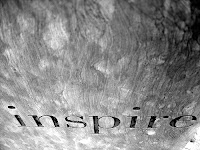Social Media Project link : http://ism3004.wikispaces.com/Sprint
The social media project was a project that took quite a while to complete. It was a different type of project from the other ones because the one requirement was to work with a few other people as a collaborative effort. At first, I thought it was going to be very difficult considering this is an online-type class, but it turned out to be easier to communicate than I thought. Using a combination of email correspondence and the discussion board, I think we effectively created a detailed wikipedia on the social media effort of Sprint.
We decided on Sprint because one of the team mates worked for Sprint and had some background knowledge into their social media efforts. Doing my part, which was researching and typing the YouTube, Wikipedia, and other social media, I learned a lot about Sprint. They had a much more extensive campaign than I was aware of. They use YouTube to market their 4G network and allow for viewers to respond positively or negatively about it. They also categorize individual phones that are on sale at the Sprint stores so that potential customers can read reviews or post one.
 |
| wikicommons |
The Wikipedia portion involve describing the details of the company and how it evolved as a company, but it only gave the cold hard facts. I don't think wikipedia is one of the better forms of a social media outlet just because as an interactive encyclopedia, it's important to stay objective. Other than generating interest by participating in the research, I don't see how this would be a great place to advertise.
 |
| simplyzesty |
Twitter was a great area that Sprint excels in. The @sprintcare was a great idea to take care of individual problems while allowing other people to see the resolution. One of my team mates, Burton, wrote about this and said that he saw many more replies when @sprintcare was used than when the @sprint was used. Twitratr was a problematic part of the project, because I think it didn't accurately reflect Sprint as a corporation. Many of the people that tweeted were tweeting about negative problems with their phones because they were seeking out service.

























